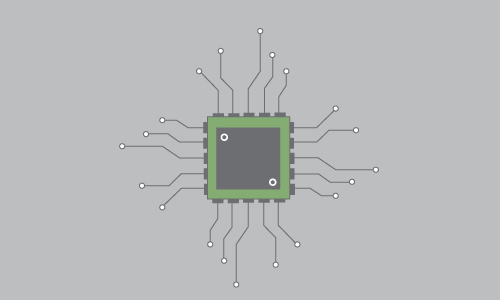Since their invention in the early 20th Century, the circuit board has become a necessity for any electronics manufacturer or end user. Used in many industrial applications, manufacturers of rigid and flexible circuit boards serve companies in a wide variety of industries including aerospace and defense, medical and instrumentation, communications, computers, industrial and consumer electronics, and more.
With improving technology, decreasing use-life, and increasing demand for electronic components in nearly every application, the market for circuit board manufacturers looks bright—rigid printed circuit boards will continue to grow at a fast pace and the flexible printed circuit board market is expanding at a 11.80% compound annual growth rate, expected to nearly triple in size by 2026.
With this high growth outlook on the horizon, manufacturers can only expect higher demand from their customers, meaning that they will need to ramp up their output in coming years. With this increase in demand, manufacturers will need to increase production—resulting in increased strain on current machinery including ovens, dryers, and pollution equipment.
The Environmental Impacts of Printed Circuit Boards
Pollution in circuit board manufacturing starts long before you produce the product. Circuit board manufacturing relies on materials that are already processed before they reach your facility, undergoing much more work to become a finished product. In turn, every step to convert materials to a finished product—cleaning and surface preparation; catalyst application and electroless plating; pattern printing and masking: electroplating; and etching—all create more risk for pollution.
Potential air emissions from the manufacture of printed circuit boards include: acids such as sulfuric, hydrochloric, phosphoric, nitric and acetic; chlorine; ammonia; and organic solvent vapors (isopropanol, acetone, trichloroethylene; Nbutyl acetate; xylene; petroleum distillates; and ozone depleting substances (ODSs).
Reducing Air Pollution in PCB Manufacturing
Throughout the entire process, there are opportunities to reduce your environmental impact through administrative and functional changes, but even if these actions reduce the amount of pollutants in your emissions, the only way to reduce overall emissions enough to become or remain compliant is by treating the air before it escapes your facility to remove VOCs.
For PCB Manufacturers, the most effective way to treat these emissions is through the use of an oxidizer to destroy pollutants. Depending on your manufacturing processes and subsequent emissions, both thermal oxidizers and catalytic oxidizers can offer efficiency and effectiveness while minimizing any potential impacts on the product you are manufacturing. Learn more about the VOC abatement process by reading our guide to VOC Abatement, available free here.
Beyond Pollution Control: Ovens and Dryers for PCB Manufacturers
Increasing demand from your customers means increasing production, and while this will create additional emissions that you will need to control, it will also require you to increase your output. This will likely put additional pressure on your current equipment. Whether you need to upgrade your current equipment to handle increased demand or to avoid the increasing pressure put on your aging machinery, equipment and services from The CMM Group can help you improve your operations. Learn more about our ovens and dryers, our services, and read our guide to Industrial Ovens and Dryers here.
Case Study: PCB Manufacturer Installs Regenerative Thermal Oxidizer from The CMM Group
At The CMM Group, we understand the needs of PCB manufacturers and have helped companies like yours to select, implement, and install pollution control equipment and other process heating equipment to ensure high quality products with minimal environmental impact. In fact, we recently worked with a leading manufacturer of printed circuit boards to manufacture and install a Regenerative Thermal Oxidizer designed to control the 60 to 80 pounds per hour of MEK, acetone, DMF and toluene VOCs. Learn more about this product’s design and customer’s success here.
Ready to learn more? Contact us with your needs and specifications to get started.




